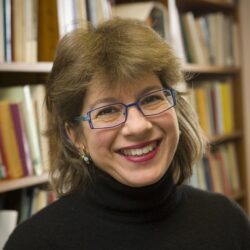Endowments: Freedom and Fuel for the Future
Endowments: Freedom and Fuel for the Future
by Meredith McNabb
There’s a famously complicated concept in common law that means that many older wills, trusts, and other legal documents wound up including a boilerplate clause saying that the trust, etc. would end “21 years after the death of the last living survivor of Queen Elizabeth II who was alive when the trust was created.” Unless you’re a history buff or studying for the bar exam, this likely doesn’t matter much to you—but the whole point of the legal complexity that built up around this “rule against perpetuities” was that, as a matter of policy, our ancestors in the common law tradition did not think it was beneficial for individuals to be able to control resources forever. Over many centuries, there came to be an understanding that tying up one’s property the way one wished after one’s lifetime was all right for a while—and with such a long life as Queen Elizabeth had, perhaps even a very long time—but not actually in perpetuity. At some point, resources should be freed up for current uses, not frozen by the wishes of the long-departed.
A Gift That Lasts Forever
The legalities are mostly quite different—but the underlying question might also be helpful in congregations and religious organizations as they invite gifts and commit resources to endowments and other “perpetuating” funds. To what extent do we (and our givers) wish to control the future, and to what extent can we and should we do so? Even outside of religious circles, there’s a growing movement (for instance, “Half My DAF”) among those engaged in high-capacity personal and organized philanthropy to encourage people and foundations to put their accumulated resources to use beyond what’s been traditionally done or required by law.
There’s something stirring about being able to invite a giver to make a gift that lasts “forever.” It can open up a heartfelt and deeply meaningful vision for how one can make a transformative difference for an organization, a cause, or a community even after one’s death. Such an invitation paints a picture of how, over time, with the so-called ‘miracle of compound interest,’ a gift in the present era multiplies itself many times over as time stretches forward (for the historically inclined, Benjamin Franklin’s estate gifts to Boston and Philadelphia are a fascinating example.) Furthermore, a gift that lasts forever expands our imaginations past the horizon of our own limited lifespans and lets us turn our attention—and even stretch our participation, in a way—into eras we otherwise wouldn’t touch. For religious communities, the legacy left by one’s ancestors is often particularly treasured as a faith practice, and gifts that can empower that legacy are honored and valued by descendants far beyond just monetary considerations.
Maybe Not Forever, Exactly
On the other hand—forever is a very long time, and our imaginations, in fact, do not stretch that far with very much clarity. Faith communities live with a longer time frame than many, as sacred texts and beliefs enlarge our imaginations beyond ourselves and our kin in important ways, not to mention so many references in the Abrahamic traditions to God’s timeframe of extending covenant and blessing for “a thousand generations.” But all kinds of contemporary writers observe that within three or four generations, nearly everyone, regardless of how renowned, is forgotten—and even the psalms and other sacred writings point out that iniquities are forgotten after that same three or four generations. Our poetry stretches to “forever,” but in practice, we don’t quite mean “forever.” (In fact, the statutory replacements for the “rule against perpetuities” above often say 125 years is how long one can control the relevant resources.)
What does this all mean for congregations and religious organizations considering endowments? The leaders of one congregational endowments webinar recently began their talk saying something very close to “We can help you ensure that your congregation exists in perpetuity”—which seems like quite a statement to make! Should our congregations actually be making plans for their existence in the year 2400? Or 3400? One wonders if what they really meant was actually a word of encouragement about ways to stretch their imaginations and their resources beyond day-to-day budget crunches and year-to-year uncertainties and to turn their minds to thinking about their plans and vision for 2040, and just maybe 2080.
Endowments Don’t Guard Against Change
Endowment resources for congregations and religious organizations can be a tremendously empowering blessing. They let future generations do things they couldn’t otherwise do, and they can create buffers for lean seasons, cushions for big-ticket repairs and long-term upkeep of buildings, and other capital resources. There are under-resourced but deeply vital congregations and organizations that would benefit hugely from the development of perpetuating—if not so much perpetual—resources. (See the endowment disparities revealed in the National Study of Congregations’ Economic Practices across religious traditions that reflect wider economic disparities.)
All of that is a powerful and positive vision for inviting donors to consider making gifts and for guiding those in the organization who steward the funds now and will steward them in generations to come. Those gifts can be freedom and fuel for those who will follow in the future. But religious leaders have an opportunity and an invitation to help their congregations and organizations consider that none of us can control the future, and that endowments do not actually guard against change. No need at all to dissect the rule against perpetuities with would-be donors—but what a good opportunity to talk about legacy, vision, and one’s religious tradition’s beliefs about hope, trust, providence, and any number of other spiritual and theological categories in conversations about gifts and resources.
Expanded Perspective: Endowments and Change
by Anne Richardson
Endowments do not guard against change, but they can make adapting to change easier. Endowment funds offer the freedom of a consistent stream of revenue for a congregation or religious organization. They can also be the fuel for change by enabling the organization to achieve a new vision.
Four years after the COVID-19 pandemic upended expectations about religious life, many congregational leaders continue to explore whether and how their assets—both tangible (e.g., buildings, land) and intangible (e.g., expertise, relationships)—are serving their mission. A congregation’s endowment should be part of this analysis, too. And while the market value of the endowment counts as a financial asset, it’s the spending from that endowment, the annual distribution, that makes the most difference in what a congregation can achieve. Any analysis should review for what purposes endowment distributions are used, and the impact of that use.
The ability to adapt to change is a vital skill for the leaders of any sort of organization. For faith communities, where money has so often been talked about in hushed tones, if at all, today’s leaders also need to be capable of connecting the dots between money and mission. What impact does your congregation have on its community—members, neighbors, and organizational partners—right now? How does the endowment distribution, among your other resources, make that impact possible? Do you wish your congregation had a different/greater impact? How could the endowment distribution bring that to life?
The creativity and caring that blossomed among congregations over 2020 and 2021 demonstrated that faith communities are more capable of change than we believe ourselves to be. Has that willingness to adapt persisted? How are your resources, monetary and otherwise, being put to use to achieve your mission today?
The purpose of an endowment is not to make sure nothing changes, but rather to provide a congregation with a long-lasting resource that can be used to fund mission and ministry both now and into the future, alongside other contributions and revenues. Showing how your endowment distribution makes your mission possible is a key part of telling an overall impact story about your activities that will change the way people think about money in your congregation, and just might inspire a new gift or two.
 Anne Richardson is the Senior Program Director for Investor Relations in the Endowment Management Program at the Episcopal Church Foundation.
Anne Richardson is the Senior Program Director for Investor Relations in the Endowment Management Program at the Episcopal Church Foundation.
Register for the Lake Lecture
Renowned scholar of Jewish studies, leading voice for modeling dialogue across difference Susannah Heschel will speak on “Generosity of Spirit: Exploring Jewish Traditions and Relational Philanthropy” at the 19th annual Thomas H. Lake Lecture on Thursday, April 18 at 6 pm EDT.
The generosity of spirit evident in Jewish traditions of philanthropy will undoubtedly offer to each one of us new ideas to explore. As our 19th Thomas H. Lake lecturer, Dr. Heschel’s unique ability to explore these questions within the Jewish traditions, and also to set them in broader contexts that speak to all of us, will serve as a tremendous gift to our entire community.
We hope you will join us in person or via livestream!
Webinar: The State of Post Pandemic Church Giving
 Drawing from their recent and ongoing research, the directors of three centers on congregational life and giving will discuss trends they have uncovered and have a guided conversation about how church financing is shifting into the future. Join us for insightful commentary and extended Q&A. Join Scott Thumma, David King, and Matt Manion this Thursday, April 11 at 12:15 pm EDT.
Drawing from their recent and ongoing research, the directors of three centers on congregational life and giving will discuss trends they have uncovered and have a guided conversation about how church financing is shifting into the future. Join us for insightful commentary and extended Q&A. Join Scott Thumma, David King, and Matt Manion this Thursday, April 11 at 12:15 pm EDT.
Subscribe
Insights, a bi-weekly e-newsletter, is a resource for the religious community and fundraisers of faith-based organizations that provides:
- Reflections on important developments in the field of faith and giving
- Recommended books, studies and articles
- Upcoming Lake Institute events


